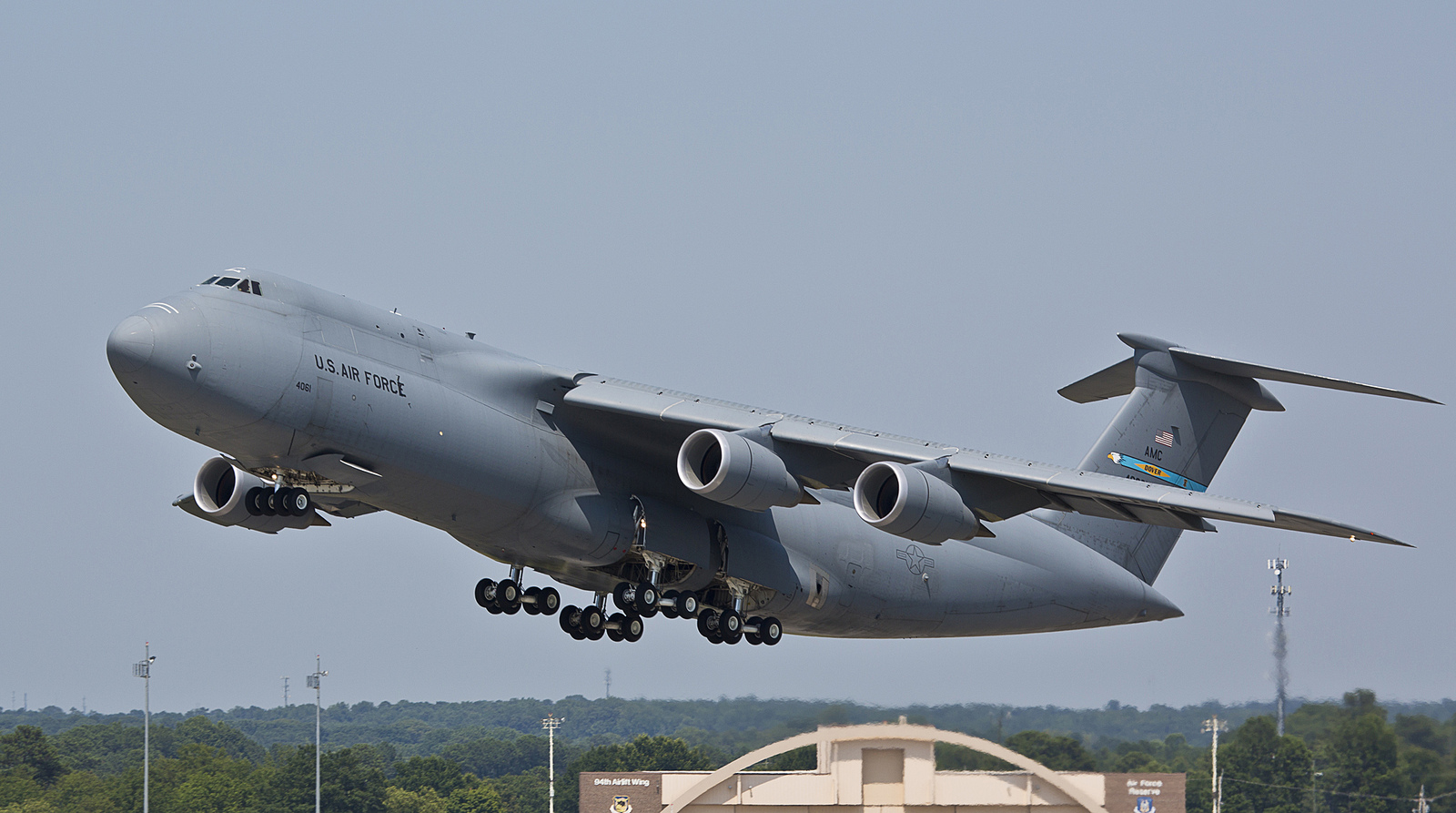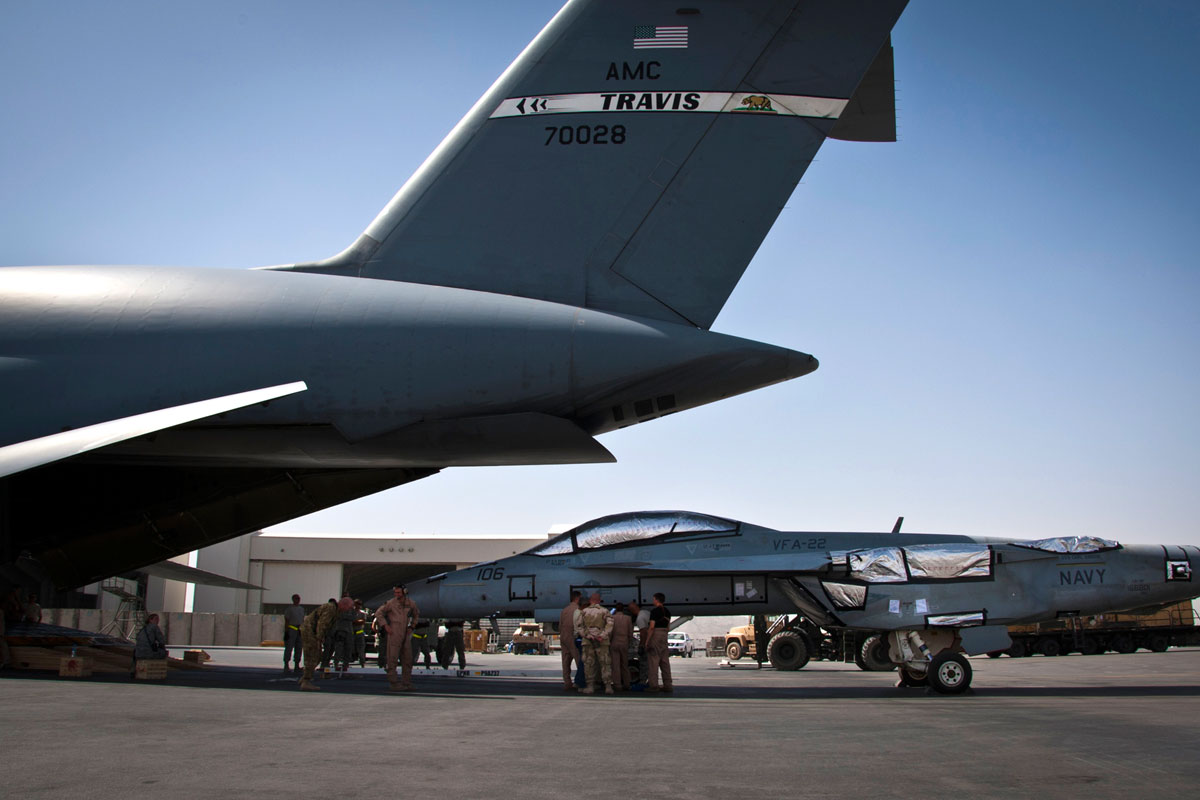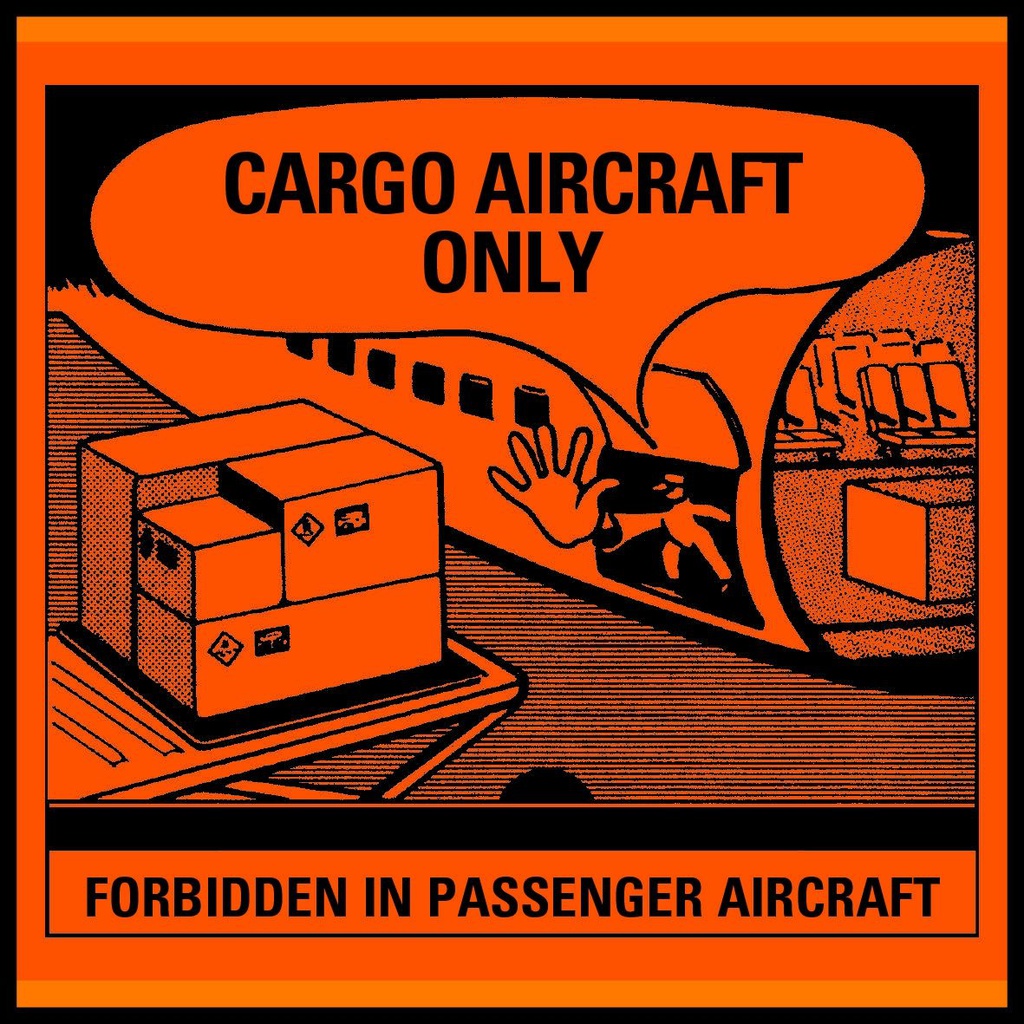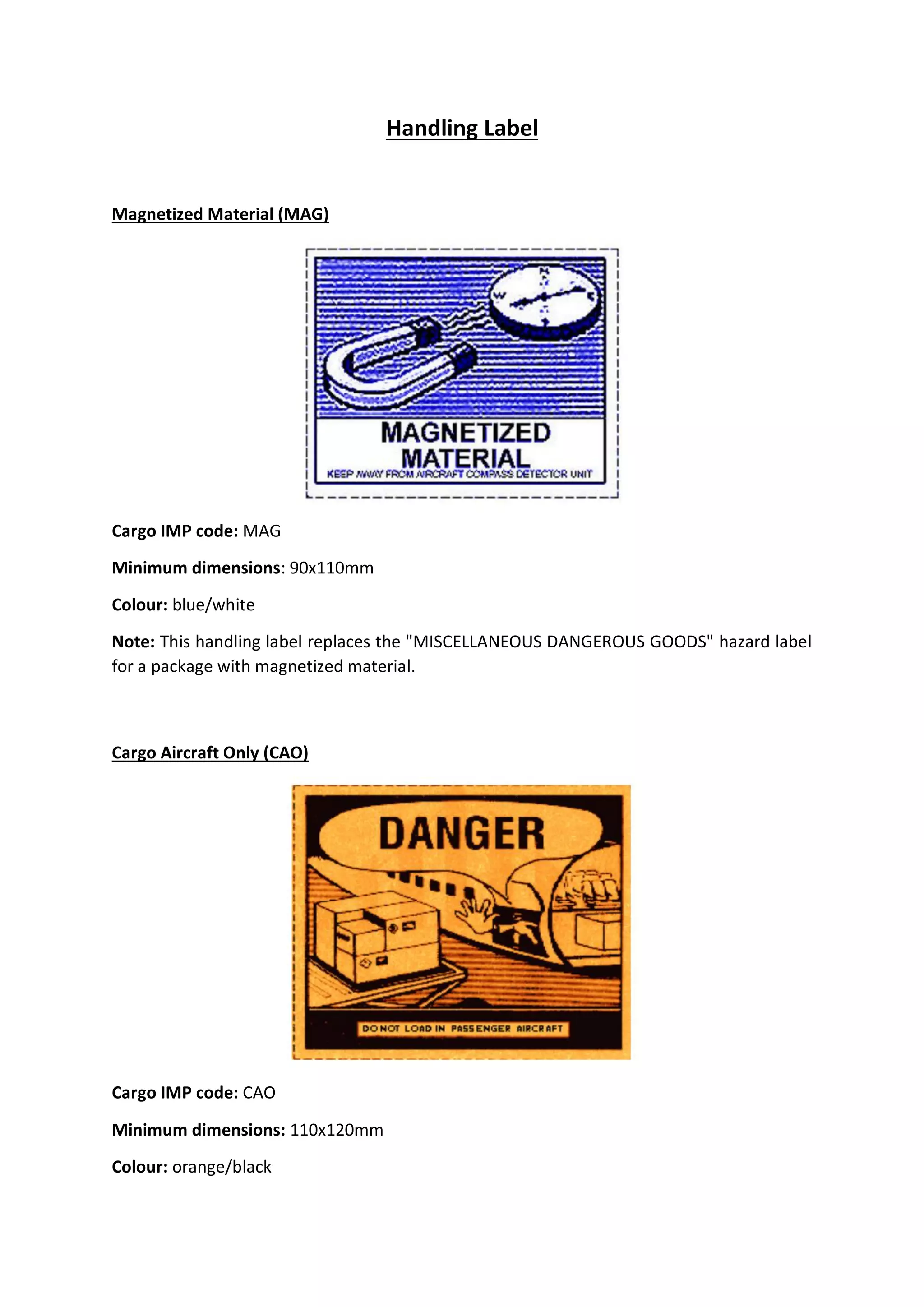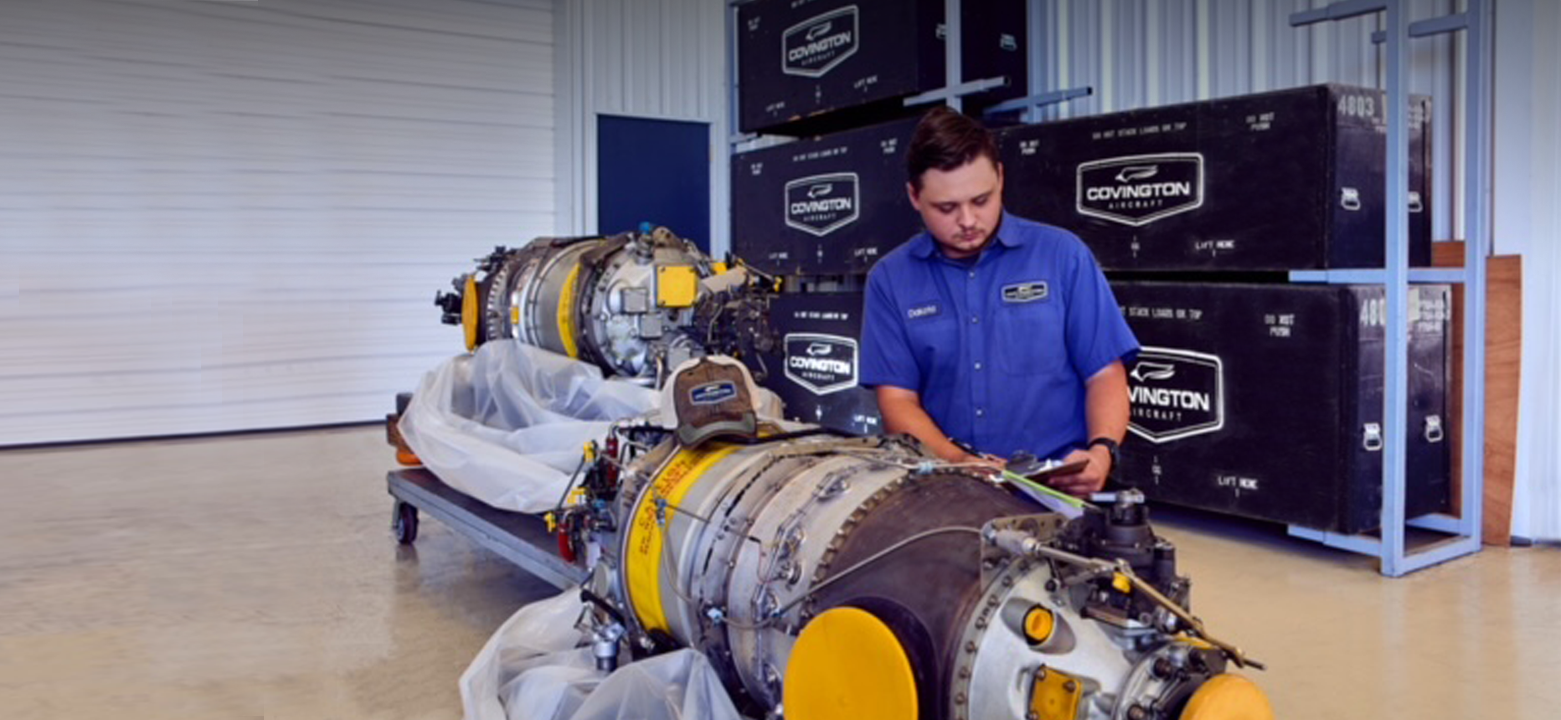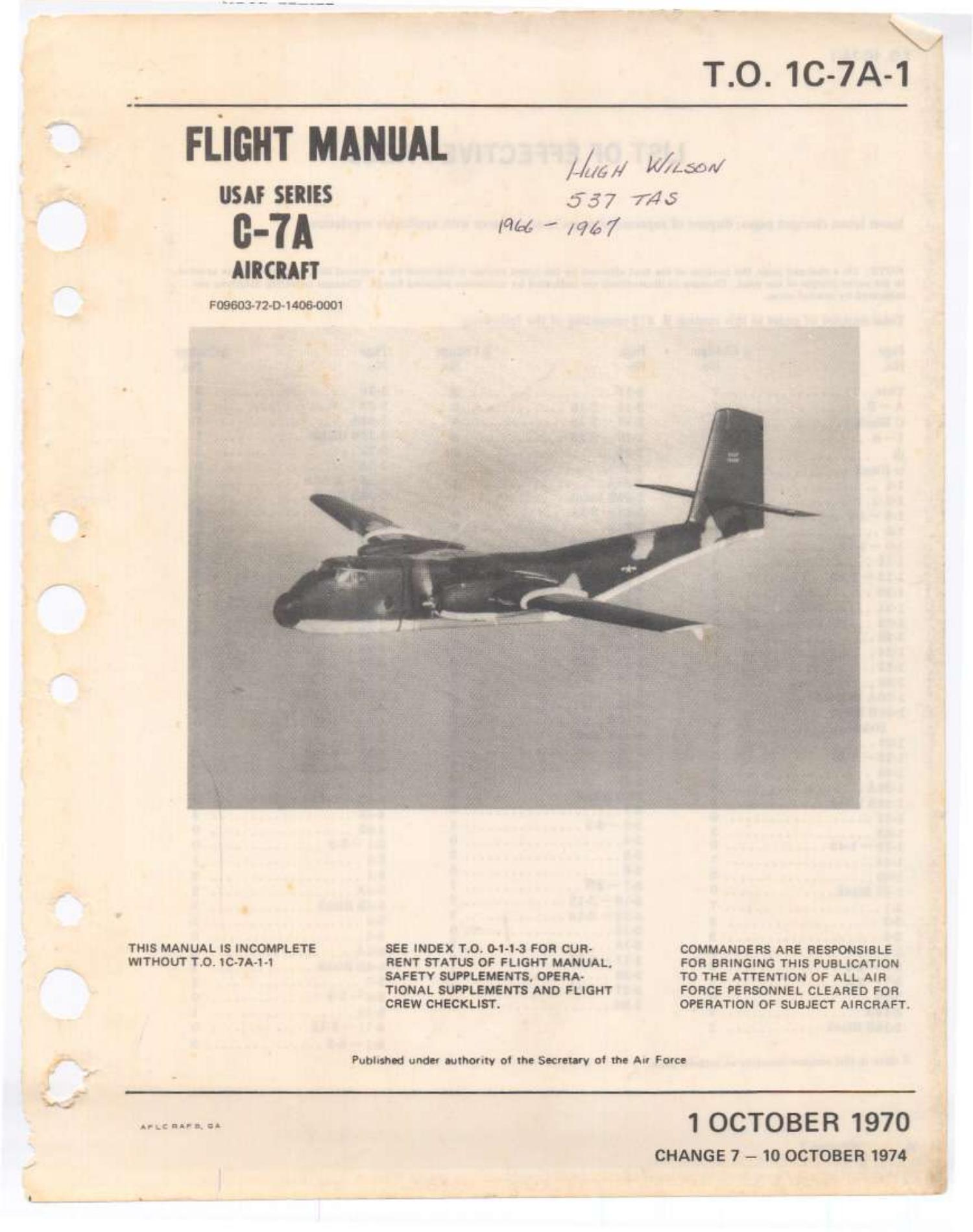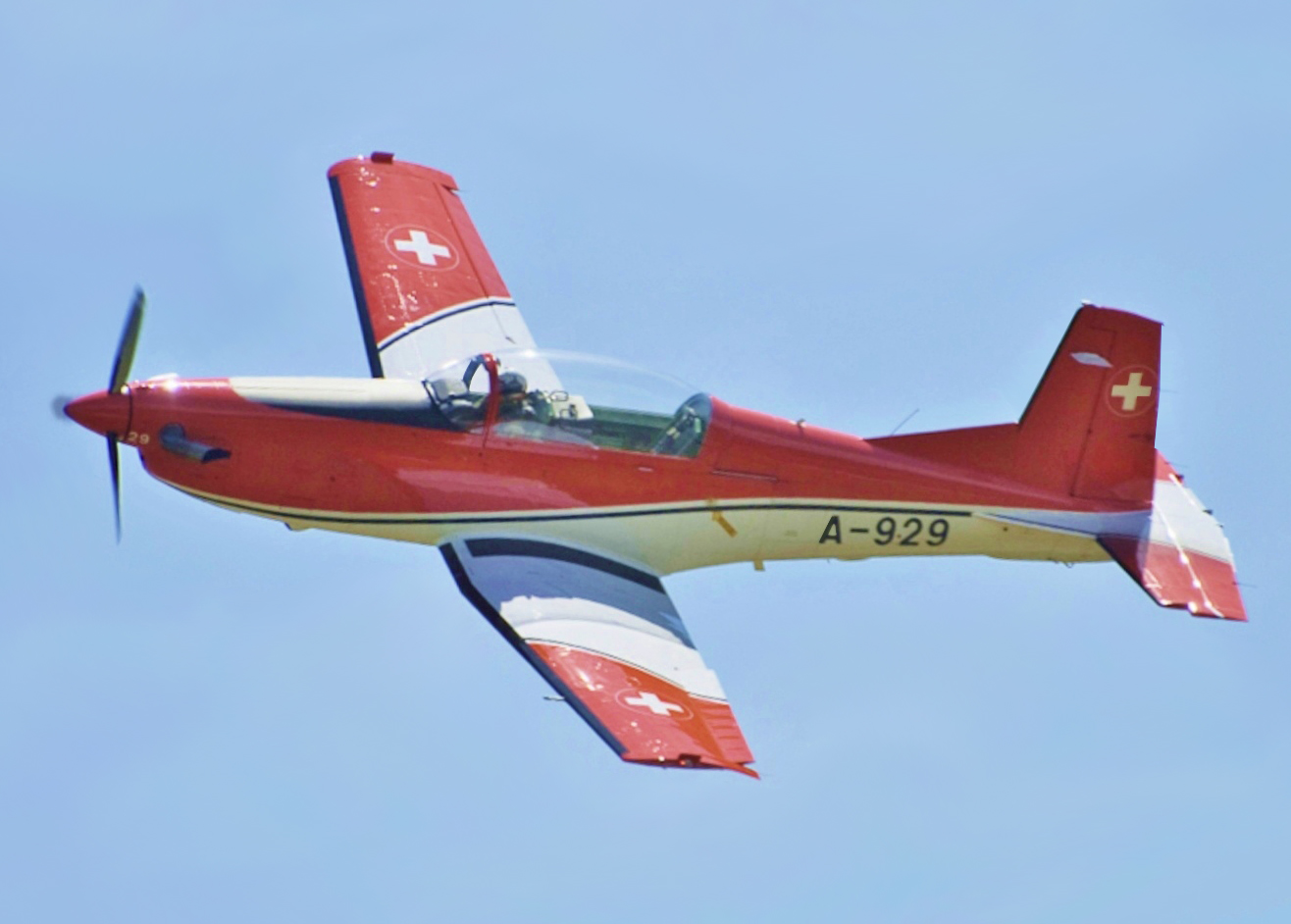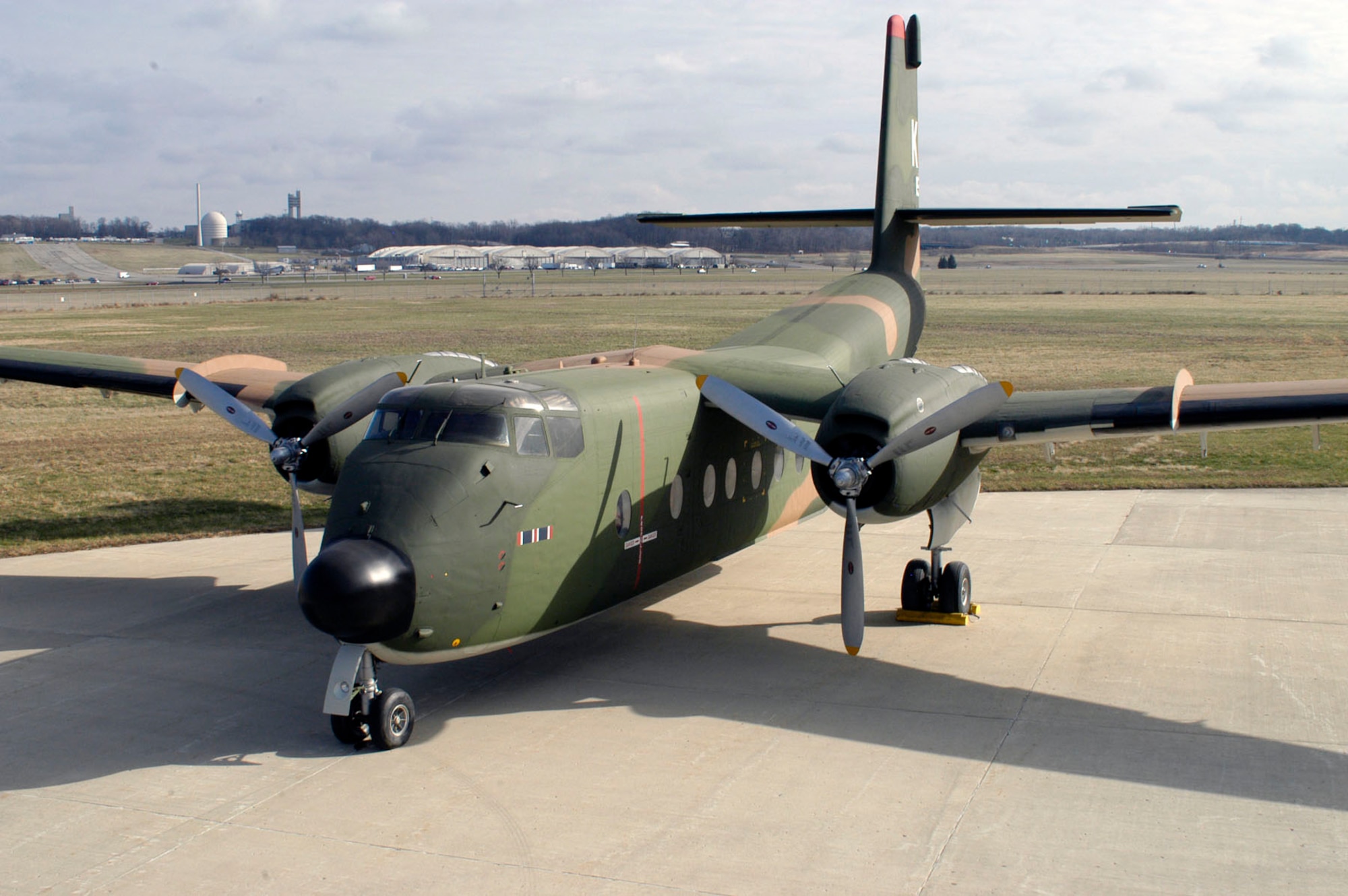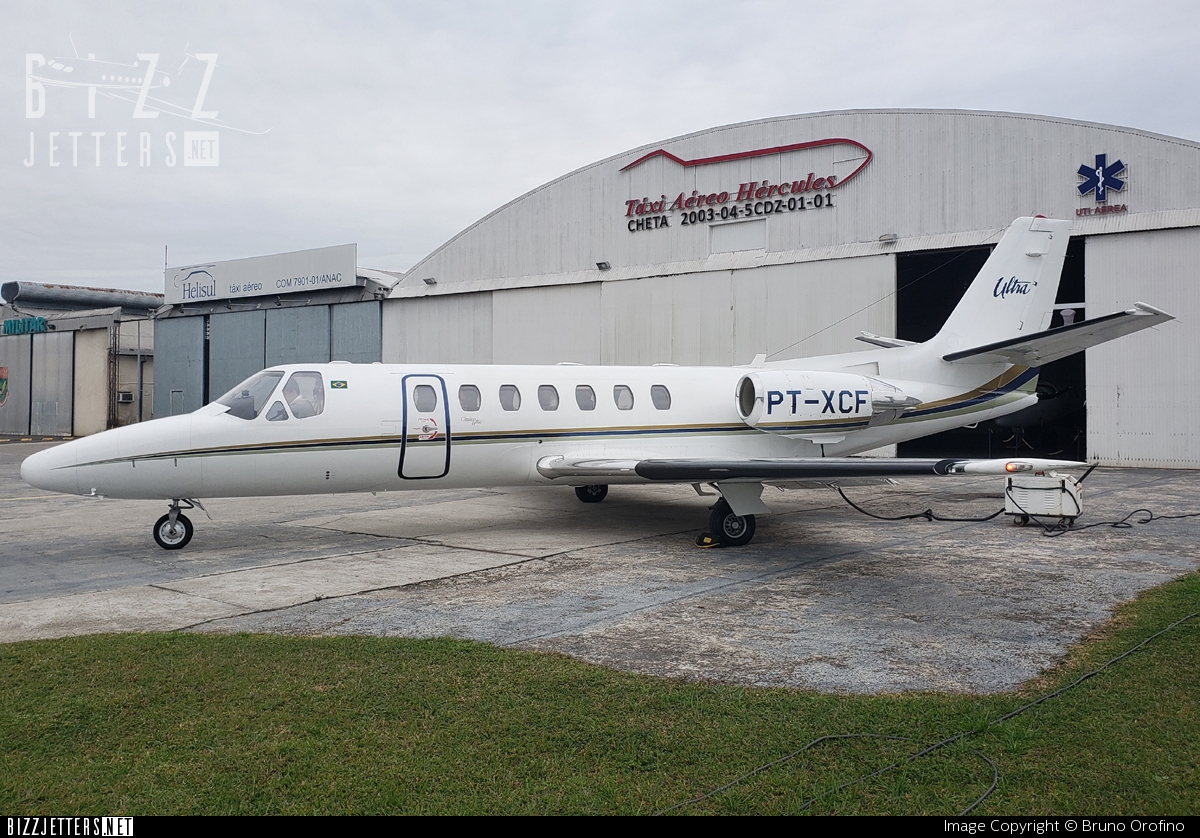Caribou Aircraft - About half a dozen DHC-4s were bought new by truly commercial firms, however, and after their service careers, DHC-4s often had second careers in civilian hands. Indeed, they are still flying in a lingering fashion now.
Pin Turbo of Cape May, New Jersey, performed a conversion of stock DHC-4s with Pratt & Whitney Canada PT6A turboprops replacing the Twin Wasp radials, the expectation being that there might be a market for "DHC-4T" upgrades.
Caribou Aircraft

There were at least two conversions, one being lost in a fatal crash in 1992 -- the ghastly incident being captured on video -- and a second conversion following. The U.S. Army purchased 159 of the aircraft and they served their purpose well as a tactical transport during the Vietnam War, where larger cargo aircraft such as the C-123 Provider and the C-130 Hercules could not land on the shorter landing strips.
[] Us Caribous In Vietnam / Other Caribou Users
The aircraft could carry 32 troops or two Jeeps or similar light vehicles. The rear loading ramp could also be used for parachute dropping (also, see Air America). This machine performed its first flight as the ACLS testbed in the spring of
1975, continuing trials with the USAF at Wright-Patterson Air Force Base in Ohio until 1979, when it was handed back to Canada. It was converted back to normal CC-115 configuration and, at last notice, was still in use in the SAR
roles. Aircraft air cushion landing systems have been considered for a long time time -- but despite their clear advantages, nobody's ever adopted an aircraft fitted with such a scheme for service, probably because of the complexity.
This pulldown menu, in addition to each photographer available as a search limiter, also shows the number of photos currently in the database for each specific photographer, enclosed in brackets. For example, an option of:- Paul Jones [550].. indicates that there are 550 total photos taken by Paul Jones currently in the database.
[] Experimental Buffalos / Proposed Viking Production
There were a few civilian users. As with the Caribou, there were some used-market dealings with the Buffalo, for example Abu Dhabi handed over theirs fleet to Indonesia in 1995. Overall, sales of the Buffalo were not up to the
success of the Caribou. DHC flew a demonstrator of a "DHC-4E" that was similar to the DH4-4D, but had a "quick-change" interior to allow it to be quickly converted from a cargolifter to an airliner or VIP configuration, or
"combi" passenger-freight configurations. There were no buyers. The Buffalo generally looked like the Caribou, except for the turboprop power plants; a tee tail; a reprofiled wing with slightly larger span; and a fuselage stretch of about 10%.
The DHC-5 was powered by General Electric (GE) T64-GE-10 turboprops providing 2,135 ekW (2,850 EHP). Payload was 41 troops; 35 paratroopers; 24 litters and six seated casualties or attendants; or 4,820 kilograms (10,630 pounds) of cargo.
[] Dhc- Caribou Origins / Caribou Described
Additionally, decade ranges (1990-1999, etc.) are available as selections in this menu. Selecting a decade range will show all photos matching your other search criteria from the selected decade. The 'All Years' selection is the default selection for this option.

This pulldown menu, in addition to each year available as a search limiter, also shows the number of photos currently in the database for each specific year, enclosed in brackets. For example, an option of:- 2003 [55000].. indicates that there are 55,000 total photos taken in the year 2003 currently in the database.*Note: The total number of photos, enclosed in brackets, is updated four (4)
times hourly, and may be slightly inaccurate. * The Caribou was a straightforward medium tactical cargolifter, with twin piston engines; a high wing; an oversized tailfin, with the tailplane mounted well above the fuselage; and a high tail with loading doors.
The wing had an inverted gull configuration; they featured full-span double-slotted flaps for short takeoff performance, the outer flap sections doubling as ailerons. The majority of Caribou production was destined for military operators, but the type's ruggedness and excellent STOL capabilities also appealed to a select group of commercial users.
Design And Development[]
US certification was awarded on 23 December 1960. Ansett-MAL, which operated a single example in the New Guinea highlands, and AMOCO Ecuador were early customers, as was Air America, (a CIA front in South East Asia during the Vietnam War era for
covert operations). Other civilian Caribou aircraft entered commercial service after being retired from their military users. Further orders followed, with deliveries from 1963. These machines were in the form of the "DHC-4A" AKA "CV-2B" variant -- originally the US Army
designation was supposed to be "AC-1A" -- similar to the DHC-4, except for structural reinforcements to support higher maximum takeoff weight. Later production also had an AN/APB-158 weather radar in a nose pimple, with the radar fitted to earlier AC-1As and some AC-1s.
A total of 103 AC-1A Caribous was built. There were trapezoidal crew doors on both sides of the rear fuselage; in early production, the crew doors opened forward and had a separate ladder, while in later production they were built as fold-down "airstairs".
[] Dhc- Buffalo
The right-side door could be jettisoned for passenger escape. There was access hatch above the cockpit, an escape hatch beneath the cockpit, and another escape hatch behind the cockpit. Payload capacity was 32 troops; or 26 paratroopers;
or 22 litters, four seated casualties, and four medical attendants; or 3,965 kilograms (8,740 pounds) of cargo, with the cargo bay capable of stowing two jeeps. * The US National Aeronautics & Space Administration (NASA) Ames Center
performed two conversions of C-8As as experimental "XC-8A" machines -- some sources hint they were the same machine in different guises, but there's a photo of the two in flight together, so clearly they were distinct aircraft.
Like the C-23, the C-7 Caribou filled a vital niche for the Army. Instead of providing that support in the deserts of the Middle East, however, it proved to be a valuable cargo asset in the jungles of Vietnam.

Operational Service[]
The C-7 could carry four tons of cargo or 32 troops, had a top speed of 216 miles per hour, and could go 1,308 miles. The RCAF obtained 15 DHC-5A machines, which were given the service
designation of "CC-115"; they featured CT64-810-1 turboprops with 2,280 ekW (3,055 EHP) and payload increased to 6,280 kilograms (13,845 pounds). At at least part of the Canadian fleet was modified to a cargo / search and rescue
(SAR) configuration -- it's not exactly clear what the SAR conversion is entailed, the SAR machines only being visibly different in having bulged observation windows on the rear crew doors. The second NASA Ames conversion was a modification by NASA and Boeing, the
"Quiet Short-Haul Research Aircraft (QSRA)", with four Lycoming F102 turbofans engines and another "blown upper surfaces" wing. Initial flight was in 1978. The QSRA actually performed landing and takeoff on the carrier USS KITTYHAWK, requiring neither arresting gear nor catapult launch.
[] Comments Sources Revision History
The QRSA was substantially quieter than a conventional jetliner -- an important consideration for operating STOL transports out of small airports in close proximity to urban areas. * From the late 1940s, De Havilland Canada (DHC) established a reputation
with its single-engine "DHC-2 Beaver" and larger "DHC-3 Otter" utility aircraft as a manufacturer of rugged "bushplanes" with very good "short takeoff & landing (STOL)" performance. In the late 1950s, DHC went on to build a larger twin-engine STOL cargolifter, the "DHC-4 Caribou", which saw
extensive combat service in Vietnam. It was followed by the "DHC-5 Buffalo", which was much the same aircraft except for fit of turboprop instead of piston engines. This document provides a history and description of the
Caribou and Buffalo. A list of illustration credits is included at the end. The de Havilland Canada DHC-4 Caribou (known in the U.S. military as CV-2 and C-7 Caribou) was a Canadian-designed and produced specialized cargo aircraft with short takeoff and landing (STOL) capability.
The Caribou was first flown in 1958 and although mainly retired from military operations, is still in use in small numbers as a rugged "bush" aircraft. * US Army Caribous were in Vietnam from 1961, generally flying in overalls
olive drab colors. The Army appreciated the STOL performance of the Caribou; the Air Force preferred the Fairchild C-123 Provider, which had twice the payload, but limited STOL capability. Caribous were seen as particularly useful for resupply of remote bases, which were often sited in rugged
terrain. The US Army obtained a total of 6 + 56 + 103 = 165 Caribous. The last Caribous were rolled out in 1973 after the production of 307 machines, with the US Army being by far the biggest single operator, obtaining the majority

or DHC-4s built. In 1967, a political decision was made by the United States Air Force who, believing that all fixed-wing aircraft operations were its own province, demanded that the Army turn over the Caribou. The Army ultimately traded the Caribou to the Air Force in exchange for an end to restrictions on Army helicopter operations.
In addition, some US Caribou were captured by North Vietnamese forces and remained in service with that country through to the late 1970s. * There were a number of experimental conversions of the DHC-5. One DHC-5,
originally obtained by Canadian Forces as a CC-115, was used as a trials platform by organizations in Canada and the US, being initially handed over to Bell Aerospace in Buffalo, New York, in 1971. The aircraft was fitted
with a hovercraft-like "Air Cushion Landing System (ACLS)" under a joint US-Canadian contract. The ACLS Buffalo could not only land on any level terrain, it could come down on water, being fitted with wingtip floats like
those on a flying boat to keep the wingtips from splashing in. It retained its original landing gear to complement the air cushion landing system. The DHC-4 was powered by PW R-2000-7M2 air-cooled two-row 14-cylinder Twin
Wasp radials providing 1,080 kW (1,450 HP) each, driving three-blade variable-pitch propellers. Most Caribous were delivered with prop spinners, although they were generally deleted later, being judged more trouble than they were worth. Some Caribous were fitted with reversible propellers in service
to improve short-field landing capability. The engine cowling opened up in triple "petals", hinged on the rear, for service access. All fuel storage was in wing tanks outboard of the engines; total fuel load was 3,138 liters (828 US gallons).
The US Army developed fuel bladders, in the form of rubber cylinders that looked like very fat tires, that could stow 1,326 liters (350 US gallons) each. Up to three could be hauled in the cargo
bay, primarily to increase range for ferry flights, but also potentially for delivery of fuel to forward areas. There was also an experiment with using the Caribou as an inflight refueling tanker, but it was never done
operationally. Following US Army evaluation of the five "YAC-1" machines -- one of which crashed in 1959, to be replaced by a sixth YAC-1 -- the Army placed an initial order for what would amount to a total of 56 "AC-1" production
aircraft, with all deliveries in 1961. The AC-1 and was redesignated "CV-2B" in 1962, when the US armed services adopted a common designation scheme. Most of the surviving US Army Caribous were passed on to the US Air Force in

early 1967 as the "C-7" and "C-7A", with the Army retaining 15 machines for various duties. The Air Force Caribous, generally repainted in disruptive camouflage colors, continued in heavy use, a few being configured with radio
relay gear to operate as battlefield communications relays. As American forces were withdrawn from Vietnam from 1971, the Air Force passed on most of the fleet to the South Vietnamese Air Force, although 32 were flown back to the
USA for use with by Air Force Reserve and the US Air National Guard. The South Vietnamese weren't able to maintain their heavily-used Caribous, and the fleet ended up increasingly grounded. Some were still flying when South
Vietnam fell to the Communists in 1975, and was used for a time by the new unified Vietnamese state. A Canadian company, de Havilland Canada, ended up fielding a design that would fit the bill for the Army.
It was unique in that it could take off and land given just 1,000 feet. It could pull this off despite the fact that it had less horsepower in its two engines than in a single R-2800, the engine that powered World War II planes, like the F6F Hellcat and the P-47 Thunderbolt.
Selecting 'Boeing 747,' for example, will show results featuring all Boeing 747 jetliners in our database, while selecting '- Boeing 747-200' will show all Boeing 747-200 variants in our database (Boeing 747-200, Boeing 747- 212B, Boeing 747-283F, etc.)
All countries represented in our database are included in this selection menu, which is updated automatically as the database grows. There must be at least 20 photos from a specific airport in the database before that airport is added to this list.
* In 1954, with US Army encouragement, de Havilland Canada decided to build a STOL transport in the size range of the Douglas DC-3 / C-47. The effort was primed by an initial order for two prototypes from the Canadian government
and an order for five evaluation aircraft from the US Army, with the US Army obtaining a waiver to permit their acquisition -- it was a bigger aircraft than the service's pact with the US Air Force permitted the Army to have.
Small aerodynamic models of the "DHC-4 Caribou", as it was named, were evaluated first on a truck, then on the back of a DHC-3 Otter. The first Caribou performed its initial flight on 30 July 1958.
The US Army evaluated the Buffalo in Vietnam, but there were no further US orders. The Buffalos were passed on to the Air Force in 1967 along with the Caribous, with the Air Force designating the Caribous "C-8A".

They were used mostly in test and trials by other US government agencies -- see below. Apparently political pressure to "buy American", and USAF disinterest in the type, played roles in not following up the initial evaluation buy.
de Havilland Canada's third STOL design was a big step up in size compared to its earlier DHC Beaver and DHC Otter, and was the first DHC design powered by two engines. The Caribou, however, was similar in concept in that it was designed as a rugged STOL utility.
The Caribou was primarily a military tactical transport that in commercial service found itself a small niche in cargo hauling. The United States Army ordered 173 in 1959 and took delivery in 1961 under the designation AC-1 which then changed to CV-2 Caribou.
* The Caribou went out of production because it was replaced by the "DHC-5 Buffalo", a stretched and turboprop-powered derivative of the Caribou -- in fact, it was originally known as the "Caribou II", with the original Caribou
prototype fitted with turboprops as a prototype, performing its initial flight on 22 September 1961. Development was funded by a collaboration of the US Army and the Canadian government, with DHC also contributing funding. The United States Army has a little-known fleet of fixed-wing cargo planes.
Currently, the major player in that fleet is the C-23 Sherpa, but throughout the years, there have been some other planes that proved very capable of handling the Army's needs. One such plane was the C-7 Caribou.
When Caribous couldn't actually land, they used a spectacular technique known originally as "Low Level Extraction (LOLEX)" and later "Low Altitude Parachute Extraction System (LAPES)" -- in which a cargo mounted on a shock-absorbing pallet was yanked out of the aircraft by a drogue parachute
as the aircraft flew over the target area at head height. LAPES could only be used for rugged payloads, but it was much more accurate than a parachute liquorice. Caribous would also sometimes land on bases under fire, keeping them
engines revved up, so they could depart the instant a cargo was unloaded. They sometimes didn't make; there's even a horrific photo capturing the death of a Caribou, being hit by "friendly" artillery fire during its approach to
an airfield.
caribou aircraft for sale, caribou aircraft specs, caribou aircraft vietnam, caribou cargo plane, de havilland canada dhc 4 caribou, c 7 caribou for sale, c 7 caribou aircraft models, c 7 caribou aircraft


![Lockheed C-5 Galaxy - Buy Royalty Free 3D Model By Squir3d (@Squir3d) [22F2f12]](https://media.sketchfab.com/models/22f2f122e0a74dbbb815dc10dedafc3d/thumbnails/d5cade4603ff417d96795f8233254df0/b7ebb47748ef46e482b37d573f335c03.jpeg)

